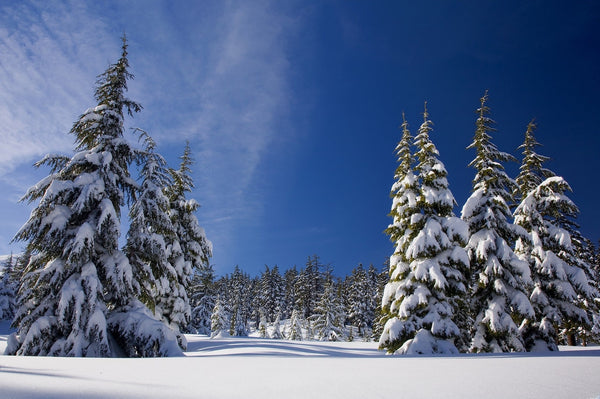Are you prepared for winter? Most people bring their potted plants indoors, but what about trees and plants that aren’t in a container? Winter brings more than just cold temperatures and bad weather, so it’s important to be prepared. We’ve included a few tips and tricks below for winter plant protection through the chilly months:
Fluctuating Temperatures
Winter ushers in cold temperatures that can harm our plants, but temperature fluctuations can be an even greater threat. For example, warm temperatures earlier in the day and colder temps at night causes tree bark to expand and contract. This weakened bark causes long horizontal cracks, called frost cracks. Sunscald is a similar condition caused by fluctuating temperatures and causes lesions, along with long cracks, in tree bark.
Unfortunately, these cracks cause your tree to be more susceptible to diseases and pests. Luckily, your trees can survive frost cracks, and they’ll often heal during the next growing season.
But in order to prevent frost cracks and sunscald and get the most of winter plant protection, wrap the trunks of your trees with a tree wrap or guard. The tree wrap should boast durable fabric to survive winter weather, and the color of the cloth must be lighter to reflect the sunlight. When consistently warm temperatures arrive in the spring, remove your tree wraps.

Winter Plant Insulation
Tree wraps also provide insulation for trees and keep them warmer as temperatures drop. If you know that a hard freeze is coming, be sure to take a sheet and cover trees and shrubs at night. The sheet will provide a layer of protection from the frost and keep some heat in.
Generally the ground is a lot colder than the air, so it’s important to be aware of freezing roots. Your trees and plants may also be experiencing frost heaving, which can be even worse. Frost heaving happens when the soil is repeatedly frozen and thawed in the late fall or early spring, causing the ground to expand and contract. The ground movement caused by the expansion and contraction can damage the roots of trees and shrubs.To prevent frost heaving, keep your plant’s roots insulated by spreading a layer of hay or pine straw around their bases.
And if your yard has a thick layer of snow, consider leaving it rather than shoveling! Contrary to popular belief, snow can actually help keep your trees warm. Also, avoid using chemical sprays and salts around your plants. The salt can be absorbed by a plant’s roots and spread to the rest of the plant, harming its foliage and overall health.

Protect Your Plants from Winter Weather
Even though snow will keep roots insulated, it can be a heavy burden on the branches. Snow and ice can sometimes get too heavy for branches to support, causing them tobend and snap. To prevent this, you can use a tree wrap or tough cloth to tie evergreen tree foliage close to the trunk. The goal is to pull branches upwards towards the trunk: You can tie the branches close to the trunk 1/3rd and 2/3rds down from the top of the tree. To prevent branches from bending and snapping on deciduous trees, you can cover them with burlap to distribute the weight of the ice and snow more evenly.
Furthermore, cold winter winds can severely dehydrate evergreen trees through their foliage. Water evaporates through atree’s foliage, and harsh cold winds can speed up the water loss in this process. With the ground being frozen, trees can’t get new water through their roots. Thisresults in brown or rusty red foliage known as winter burn.
To avoid winter burn, ensure that your trees get enough water in the fall before the ground freezes. Put a layer of mulch around your tree’s base to help retain moisture, and consider planting your trees in non-windy areas. Another method? Build a burlap screen in front of your trees to block the wind.
Optimize winter plant protection for your trees and use all-natural repellents and sprays to deter them deer and elk. You can also build an adequately-sized wired fence around your trees to keep their foliage out of reach.





